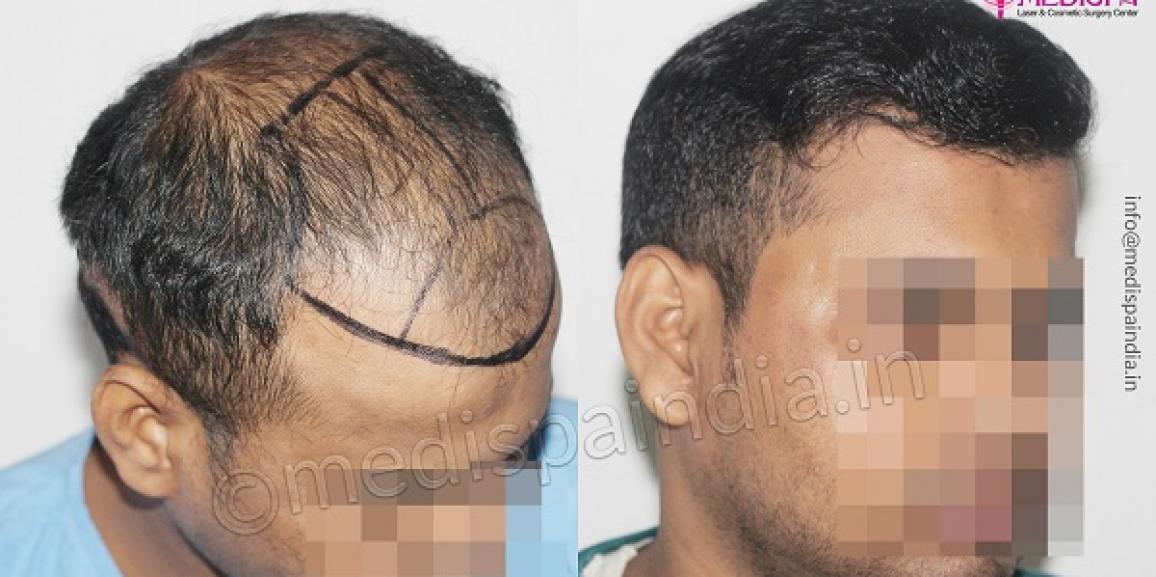
In the past, individuals used to disregard hair loss as a symptom of ageing because they were unaware of the condition and had no other options. However, individuals nowadays are aware of the issue and very motivated to find a solution. Digitalization has been shown to be a sea of knowledge that is enlightening people about various scientific and technological advances. Similar to this, as awareness grows, so does interest in hair transplant surgeries.
Why hair loss occurs?
There are several reasons why people lose their hair, but genetics is the main culprit. Androgenic alopecia, often known as male pattern baldness, is a hereditary disorder that can occur in families on either the paternal or maternal sides. Use of hot tools (hair straighteners, hair curlers), hot baths, stress, chemical straightening, tight braiding, hormonal changes after menopause, medicine (anti-depressants, anti-anxiety, and anti-psychotics), lack of sleep, and poor diet are additional factors that contribute to hair loss.
Male pattern baldness: How genes play a role?
It happens as a result of parental genes, which make the hair follicles more susceptible to testosterone and its metabolites. Hair follicles become hormonally sensitive to DHT (Di hydro testosterone) after it is formed from testosterone and 5-alpha reductase. The DHT hormone causes hair follicles to shrink excessively, which continues until the hair falls off. The Miniaturization effect is the phrase used to describe how the DHT hormone causes hair to thin and shrink. Men may experience visible baldness if the same process continues to progress over time.
What is hair transplant surgery?
A minimally invasive cosmetic surgical treatment called a hair transplant involves removing hair follicles from the donor area, usually the back and sides of the head, and transplanting them to the recipient area where baldness has developed. It requires skilled hands to complete the very precise and technique-sensitive procedure properly and satisfactorily.
Among the advantages of the procedure are:
- Organic and attractive outcomes
- The long-term advantages of further appointments in cases of increasing hair loss
- Consistent outcomes
Is it a high maintenance procedure?
The transplanted hairs are fully natural and grow in a manner similar to the existing natural hairs without the need for any extra upkeep, so the operation is maintenance-free. These hairs can therefore be handled the same as genuine hairs. These hairs can be treated identically like natural hairs in terms of washing, combing, cutting, and styling.
Does the procedure for hair transplantation hurt?
One can watch TV or listen to music easily while having a hair transplant because it is done under local anaesthetic and becomes painless during the process. The patients’ post-treatment health is unaffected by the hair transplant process.
How risk-free are hair transplants?
Although hair transplant surgery is minimally invasive, it is still conducted around sensitive areas. Even so, it is a safe treatment when carried out by a skilled surgeon. If the surgical protocols are not followed, it may result in minor to fatal consequences. Before and during the procedure, proper safety precautions must be taken by getting thorough tests done and having an emergency kit on hand.
When after the surgery can we get back to work?
There is no morbidity related to the procedure, and one can return to work right away. However, it is still advised to take the next day off from work and then return work after the surgery. Therefore, after the procedure, no leave of absence is required. The post-procedure follow up is also not strenuous and may be done alongside regular employment.
Is it best for me to get a hair transplant?
Prior to scheduling a hair transplant, you must first determine whether the surgery is feasible in your situation. This can be done during the initial consultation. Following a thorough review of the medical history and a scalp examination, the candidacy is verified. These procedures are carried out to rule out the reason of hair loss and to assess the hair density, which is the final step in confirming your candidacy. Age is not a restriction for hair transplant treatments, however they are still generally avoided in people under 21 and over 70.
When can the hair transplant’s outcomes be seen?
You will lose all the transplanted hairs within a few days, which is natural and falls under the category of growing phases. Following growth phases, these recently planted hair follicles appear on the scalp as microscopic extensions six months later. After a year following the hair transplant, you may see the full results.
Are there any prescriptions that we need to fill after the procedure?
No, after the hair transplant we don’t need to take any medicine. Since the transplanted hairs were naturally removed from your body, they grow in a manner similar to that of normal hairs. You may or may not need pain medication for the first few days following the treatment.
So certainly, hair transplant surgery is the best hair loss treatment available, and it will definitely help you say goodbye to your baldness. The best hair transplant in Jaipur and Delhi are offered by medispa clinics. Dr. Suneet Soni is skilled at performing hair transplants that produce outcomes of the highest calibre. The hair transplant cost in Jaipur has decreased, and we offer you reasonable hair transplants that adhere to international standards.


